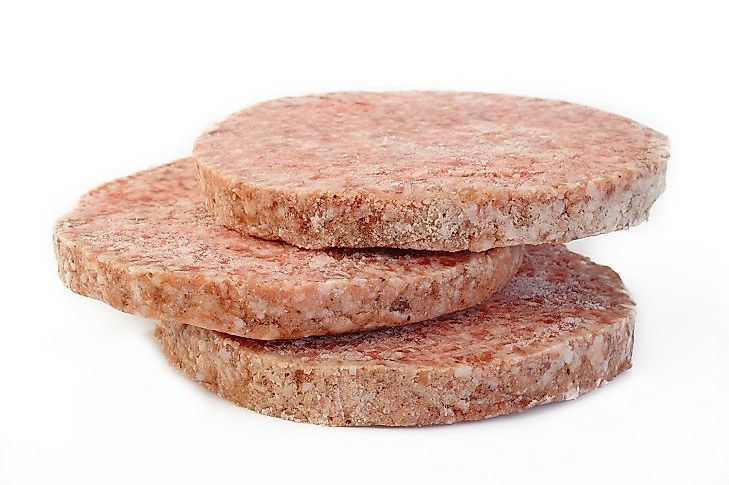Top 12 Frozen Beef Exporting Countries

Beef is the culinary term for what meat from cattle, also known as cows, is called. Beef is harvested from steers, heifers or bulls. Beef can be cut and made into all different kinds of meats and products, which will be discussed later. Beef is one of the most widely consumed meats and foods in the world and has been eaten by humans since prehistoric times. Now that some of the basics on beef have been discussed, lets see the process behind processing and exporting frozen beef.
Production and Processing of Frozen Beef Exports
In modern day industrial animal meat industry, cows are seem as a commodity and are strictly bred to produce the best meat cattle. Cattle spend a little over the first half year of their lives grazing in a restricted area and can be vulnerable to extreme weather or animal attacks. After the grazing period the cattle are transferred to feed lots to live in for around half of a year. The purpose of feed lots it to add significant weight to the cattle in a short period or time by feeding them a high protein diet of corn, soy and other by-products. Most cattle during this period are also injected with growth hormones and antibiotics to artificially add more muscle and boost their immune systems. After this the cattle are transported, usually by truck, to the slaughterhouse to be processed. Lastly the meat is usually processed on site or at meat packing plants through cutting and deboning. Then the meat is processed in a variety of ways depending on its final uses, type of cut or if it is fresh or frozen. These include grinding, mixing the beef with additives, curing the meat and more.
Processing
The first step is processing cows is called stunning. The cattle are individually placed in a stunning box and have a captive bolt fired from a gun into their brain to induce physical shock an become unconscious. This is done so that the cows throat can be slit where the main blood vessels are in the neck to allow blood to drain from the carcass in the desired way and not effect the meat. Then the carcass has its hide remove, is decapitated and its opened up and inspected. The the carcass undergoes evisceration, in which the organs and intestines are removed. Lastly the carcass is split and cut up and is chilled in a refrigerator.
Shipping
Frozen beef, unlike fresh beef, can be transported all over the world. If frozen beef is being transported over long distances, it is transported via aircraft or ships. However, the most common method of transporting frozen beef is by truck. Frozen beef is packaged in a plastic bag and stockinette, a protective covering, and then put into boxes. When transporting frozen beef, it is very important to ensure food safety, which is why all frozen beef is transported inside refrigerated containers. Frozen beef is required to be kept at a temperature of around 18° Celsius (0.4° Fahrenheit), to maintain its quality and storage life. When being transported frozen beef must also be protected from moisture, such as rain or snow, to help prevent it from being effected. Frozen beef also must be well secured during transportation so that breakage, slipping or shifting of the product do not occur and cause damage.
Uses of Frozen Beef
Beef has a wide variety of uses when it comes to food. Beef muscle meat can be cut into roasts, short ribs and a wide variety of steaks. Some cuts of this beef can also be processed into corn beef or beef jerky. The trimmings from the meat are also mixed with other meats and used in sausages. A lot of the various organs, intestines, blood, bones and other parts of a cow are also eaten or used to make other food items.
Importers of Frozen Beef
According to the Observatory of Economic Complexity (OEC) the top three importers of the world's frozen beef are the United States (14%), Hong Kong (11%) and Russia (10%). The next biggest global importers of frozen beef are Japan (6%), South Korea (5.9%), China (5.5%) and Egypt (5.2%). The biggest importers in the two parts of the global not covered are Argentina (4.9%) for South America and French Polynesia (0.11%) for Oceania.
Top 12 Frozen Beef Exporting Countries
| Rank | Country | Value of Frozen Bovine Meat Exports in 2015 (USD) |
|---|---|---|
| 1 | Australia | $4,561,115,000 |
| 2 | India | $4,030,559,000 |
| 3 | Brazil | $3,973,388,000 |
| 4 | United States | $2,521,875,000 |
| 5 | New Zealand | $2,044,366,000 |
| 6 | Uruguay | $1,067,173,000 |
| 7 | Paraguay | $659,285,000 |
| 8 | Argentina | $357,000,000 |
| 9 | Canada | $339,233,000 |
| 10 | Nicaragua | $291,845,000 |
| 11 | Poland | $289,050,000 |
| 12 | Hong Kong | $288,624,000 |











